Unpleasant sensations in the genital area, problems with urination and disturbances in sexual activity - all these symptoms can indicate the development ofprostatitis.
Unfortunately, in the early stages the disease practically does not manifest itself at all, so the man turns to the urologist too late and the disease manages to develop into a chronic form.
So what signs should you pay attention to and how to treat chronic prostatitis?
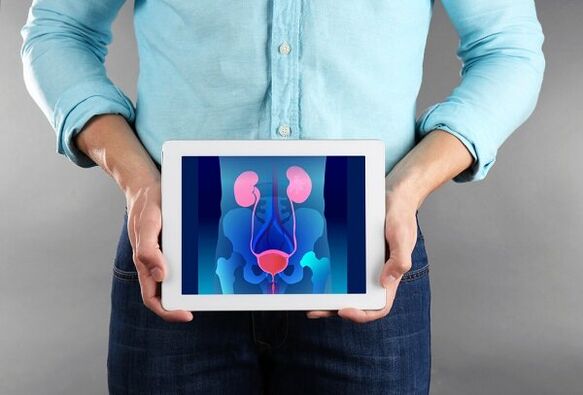
What is chronic prostatitis?
chronic prostatitis- an inflammatory process in the prostate that lasts a long time. The consequences of the disease are the alteration of the functioning of the gland and its physiological changes.
Over time, the man begins to experience serious discomfort, which directly affects his lifestyle.
This disease is one of the most common problems associated with men's health. According to statistics, 50% of men aged 50 or older have prostate problems. As for the chronic form of the disease, it is typical for young men under 40 years of age.

Classification
Chronic prostatitis in men has several forms, which differ in symptoms and causes.The following types of diseases are distinguished:
- bacterial;
- latent;
- asymptomatic;
- stagnant.
The characteristic symptoms of the disease, as well as treatment, depend on the form of chronic prostatitis.

Bacterial form of the disease.
This form is the most common and does not cause difficulties in making a diagnosis. Usually, the results of a patient's urine analysis show a high content of leukocytes, which indicates the proliferation of pathogenic microflora.
The bacterial form of prostatitis can occur against the background of decreased immunity or as a complication after a previous illness. It is treated with antibiotics and the treatment regimen depends on the type of pathogen.
latent prostatitis
The latent form can remain undetected for up to three months or more. Its middle name is pelvic pain syndrome. The cause of the development of the disease can be both inflammatory and non-inflammatory processes. The latent form is characterized by the following symptoms:
- increased leukocyte content in test results;
- persistent and constant pain in the genital area;
- problems urinating.
The main difficulty in diagnosis is that, despite the presence of leukocytes in the tests, laboratory methods cannot identify the causative agent of the infection.
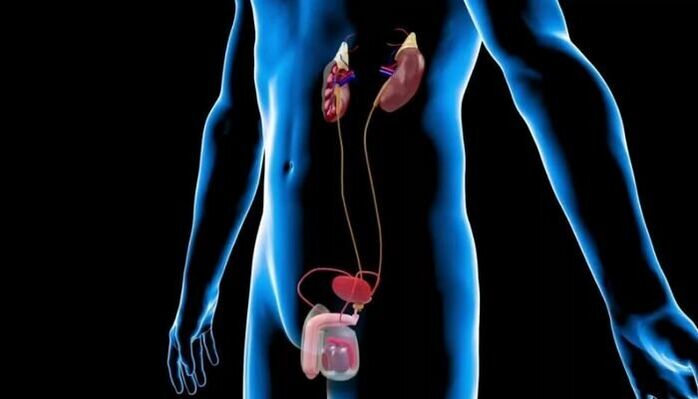
Asymptomatic inflammatory form.
The most dangerous form of chronic prostatitis. In this case, changes characteristic of the disease occur in the tissues of the prostate gland, but no symptoms indicate the presence of inflammation. The asymptomatic form is usually discovered by chance or when the disease reaches a critical peak.
After properly selected therapy, the man's health is completely restored.
Stagnant or non-infectious
The non-infectious form of chronic prostatitis arises as a result of circulatory disorders in the pelvic organs. This form of the disease accounts for approximately 1/3 of all cases of prostatitis in young men. The characteristic symptoms are difficulty urinating, alterations in intimate life and pelvic pain.

Inflammation can be caused by a sedentary lifestyle, injuries, bad habits, etc.
Causes of the disease
The reasons for the development of chronic prostatitis are quite diverse. Among the most common are:
- irregular sexual relations or frequent partner changes;
- total abstinence from sexual relations;
- injuries and diseases of the pelvic organs;
- frequent overheating or hypothermia of the pelvic area;
- congenital anomalies of the structure of the genitourinary organs;
- untreated infectious or viral diseases;
- abuse of bad habits;
- work in conditions of constant intoxication of the body;
- Metabolic disease;
- Problems with the musculoskeletal system.
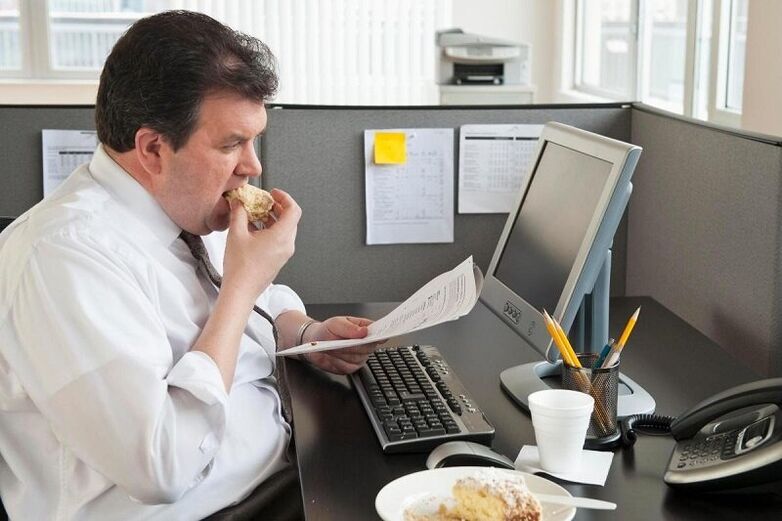
Important!In the process of treating prostatitis, it is extremely necessary to identify the root cause of the disease. This will help not only eliminate the problem, but also avoid relapses in the future.
Symptoms of chronic prostatitis.
Although chronic prostatitis can be asymptomatic for a long time, the following signs may indicate the disease:
- Strong discomfort in the perineum and genital area. Unpleasant sensations can be present constantly or occur at some specific time, for example, after urinating.
- Radiation of pain to the coccyx or pubic area.
- The sensation of a foreign body in the anus, a little closer to the perineum.
- Increased urge to urinate (especially at night).
- Feeling of fullness in the bladder even after emptying it.
- Weakening of libido, decreased erection.
- Minor mixing of blood in the seminal fluid.
- Hemorrhoids.
- Protrusion of veins through the skin of the scrotum.
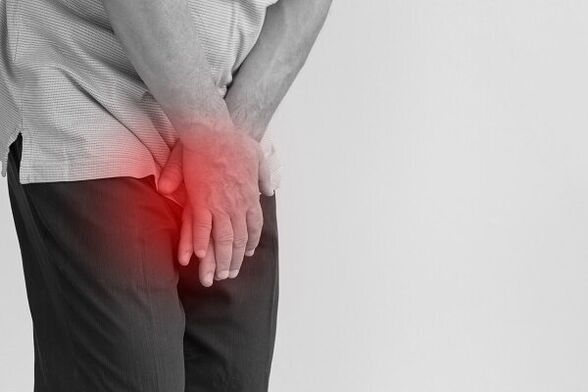
The symptoms described above can lead to the development of neurological abnormalities. As a result of frequent urination, a man cannot sleep or work enough, begins to suffer from headaches, drowsiness, irritability and even outbursts of aggression.
Diagnosis
Diagnosis of chronic prostatitis begins with a visit to a urologist. If the patient is worriedfrequenturination, sexual dysfunction and perineal pain, then the diagnosis is made quickly enough.
Difficulties in making a diagnosis arise in the case of asymptomatic development of the disease. In this case, the man is prescribed a series of additional examinations, including the use of special instruments. During diagnosis, a urologist can find out what prostatitis is and how the disease is treated.
There are the following methods to diagnose chronic prostatitis:
- Taking samples for laboratory research.. This method is suitable for patients with a bacterial form of the disease, as it makes it possible to identify the causative agent of inflammation and select the most effective therapeutic approach. Most often, a general blood and urine test is performed for research.
- Ultrasonography. If prostatitis is suspected, the patient is prescribed a transrectal examination. This method allows you to determine the exact stage of the disease and evaluate the general condition of the prostate. Additionally, ultrasound can help eliminate the risk of serious complications. Additionally, sometimes patients are prescribed a repeat ultrasound to monitor the progress of treatment.
- Tomography.MRI is prescribed in cases where other diagnostic methods are powerless or the patient is suspected of developing a malignant process in the prostate.
- Determination of PSA content.(prostate specific antigen). When PSA is greater than 4 ng/ml, additional diagnostic procedures are indicated, including prostate biopsy to exclude cancer.
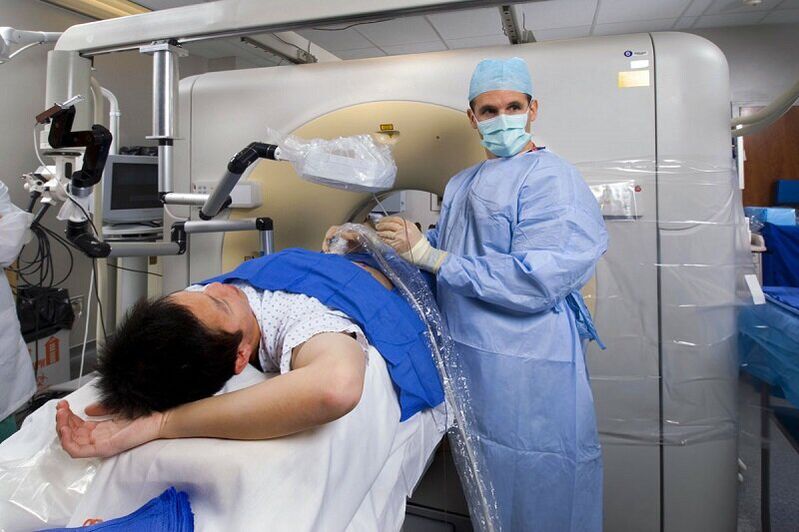
Important!Usually, when diagnosing chronic prostatitis, several methods are combined at once, for example, laboratory tests, palpation and ultrasound.
Treatment of chronic prostatitis.
Is it possible to cure chronic prostatitis? If chronic prostatitis is not very advanced, then it can be treated. If the disease reaches its last stage and the walls of the prostate begin to deform, it is possible to alleviate the patient's condition and achieve remission.
For successful treatment, it is necessary to immediately consult a competent doctor who will tell you how to cure chronic prostatitis and what to take for this. The urologist's recommendations must be strictly followed. Treatment should not be interrupted, otherwise relapse may occur.
Currently there is3 ways to treat chronic prostatitis:
- medicinal (take medicine);
- non-pharmacological (using various equipment and procedures);
- surgical (otherwise – surgically).
Pharmacotherapy
Treatment for bacterial and non-bacterial prostatitis is different. In the first case, treatment with antibiotics is necessary. But sometimes the treatment regimen can be the same: antibiotics in non-bacterial forms are prescribed to check the result.
If improvement occurs, antibiotics should be continued.
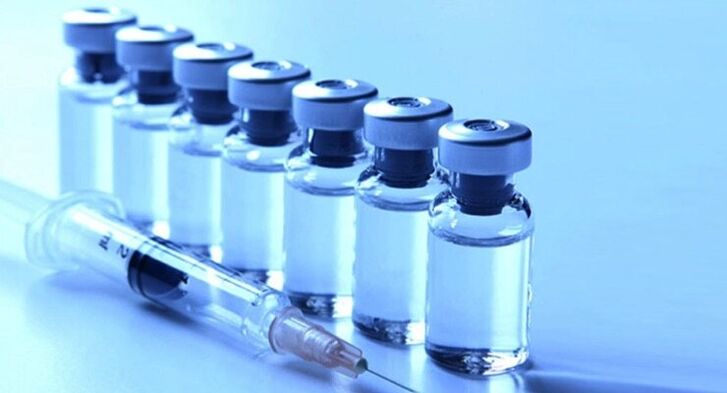
The treatment of chronic prostatitis must be comprehensive. Only in this case can you achieve the maximum effect.
For chronic prostatitis, the following medications may be prescribed:
- antibiotics;
- immunostimulant drugs;
- vasodilator tablets;
- antispasmodics;
- anti-inflammatory medications;
- angioprotectors (medicines that stimulate the metabolism of vascular cells).
Alpha blockers can also be used in treatment, but only after taking a course of antibiotics. Medications for chronic prostatitis help relax the smooth muscle tissue of the prostate and also relieve tension well.
In some cases, antihistamines and antidepressants may be prescribed.
Non-pharmacological therapy
It is recommended to combine drug therapy with physiotherapy procedures. The following physiotherapy procedures are most frequently used:
- Laser therapy.
- Electrophoresis.Special treatment solutions are used that penetrate the tissue using the electrode method.
- Temperature treatmentusing microwaves.
- phonophoresis. Exposure of the diseased organ to ultrasonic waves.
The methods can be used alone or in combination.
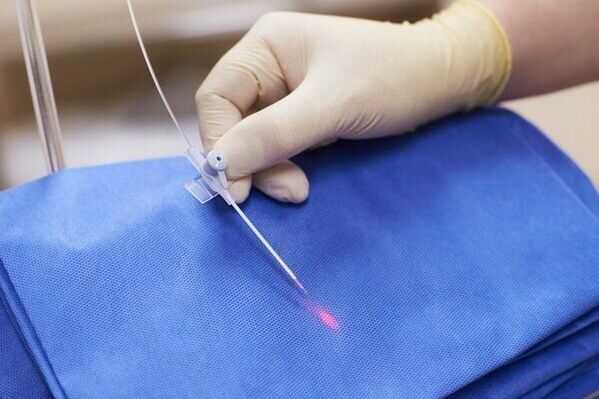
Surgical intervention
If drug therapy and physical procedures do not help, then the disease can only be removed surgically. This happens when chronic prostatitis is complicated by a sclerotic process.
In the sclerotic prostate, the pathology affects other parts, in particular the ducts from which prostatic secretions are extracted and the seminal tubercles. The entire structure of the reproductive organs changes and the man's quality of life is significantly reduced.
In this case, endoscopic surgery is performed. Even chronic congestive prostatitis can be cured surgically.
Treatment can be carried out both in budgetary medical institutions and in paid clinics. The cost of therapy depends on the severity of the disease and the duration of the course. As for the timing, prostatitis at an early stage can be cured within one month, and complicated prostatitis can be cured within 3-4 months.

Treatment of chronic prostatitis depends on the patient's health, age and lifestyle. If you follow all of your doctor's recommendations, you are likely to make a full recovery.
However, no one will guarantee lifelong remission. Patients who have eliminated the cause of the disease have a greater chance of recovery.
Timely consultation with a doctor is also of great importance. Do not delay the diagnosis and treatment of prostatitis. The sooner you get medical help, the lower your risk of complications.
Home treatment
Chronic prostatitis can be treated at home if there are no complications. In case of a frequently recurring disease or its complicated form, it is necessary to take medication.
To restore men's health, you can also use traditional medicine recipes. This therapy is auxiliary in nature, that is, it is used as a complement to pharmacological treatment.
Before using any alternative medicine, you should consult your doctor.
With the help of folk remedies, you can relieve pain, relieve inflammation, normalize the urination process and generally strengthen the immune system.
Pumpkin seeds
In the treatment of prostatitis, pumpkin seeds are used quite often. They have a large amount of zinc and the male body especially needs this trace element.
Only dried pumpkin seeds that have not undergone heat treatment are suitable for treatment. You just have to peel them and eat them. For a full course of therapy, 0. 5 kg of product is sufficient.
Such courses must be completed every year until full recovery. Every day it is enough to eat 30 to 40 seeds before meals. Don't rush, the seeds must be chewed well.
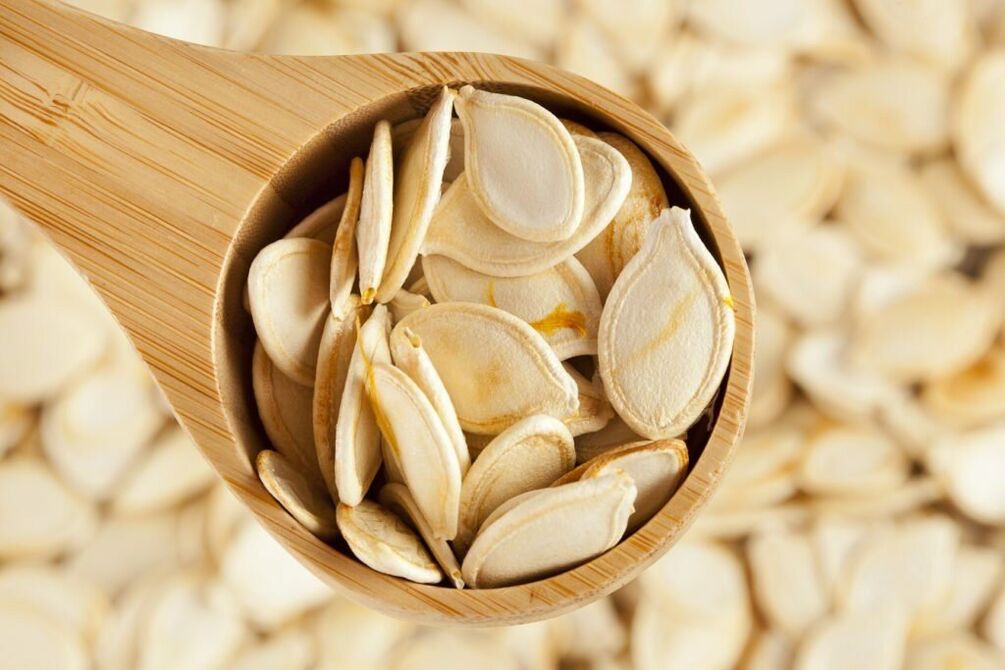
You can also prepare sweets that are good for men's health. The recipe is simple: peel the pumpkin seeds, chop them and mix well with honey (200 g).
The result should be a dough-like consistency. From this mixture, make balls 3 cm in diameter, of which you should eat 2 a day on an empty stomach. These sweets cannot be swallowed immediately, they must be chewed for 2-3 minutes.
Hazelnut infusion
To prepare a healing tincture you will need hazelnut leaves or bark. You can prepare both ingredients, remembering to alternate them. Due to its hardness, the crust takes 2 times longer to make. For preparation it is necessary to use only fresh material.
The recipe is as follows: 1 tbsp. l. hazelnut bark or leaves, pour 1 cup of boiling water (200 ml), close the lid and leave for 30 minutes. Then strain through cheesecloth. Take 4 times a day, ¼ cup. The course of treatment lasts one week.
Sagebrush
This herb has long been famous for its beneficial properties. With its help you can deal with any infection. To get rid of prostatitis, you need to undergo complex treatment, which includes washing the urethra with infusion and taking wormwood orally.
You will need 100 g of dry herb. It should be ground as finely as possible in your hands and sifted through a sieve. The smaller fragments are useful to take in dry form and the larger ones are useful to prepare an infusion, from which urethral douches and microenemas are made.
Thus, the body has a double effect: it cleanses itself of infections and relieves inflammation.
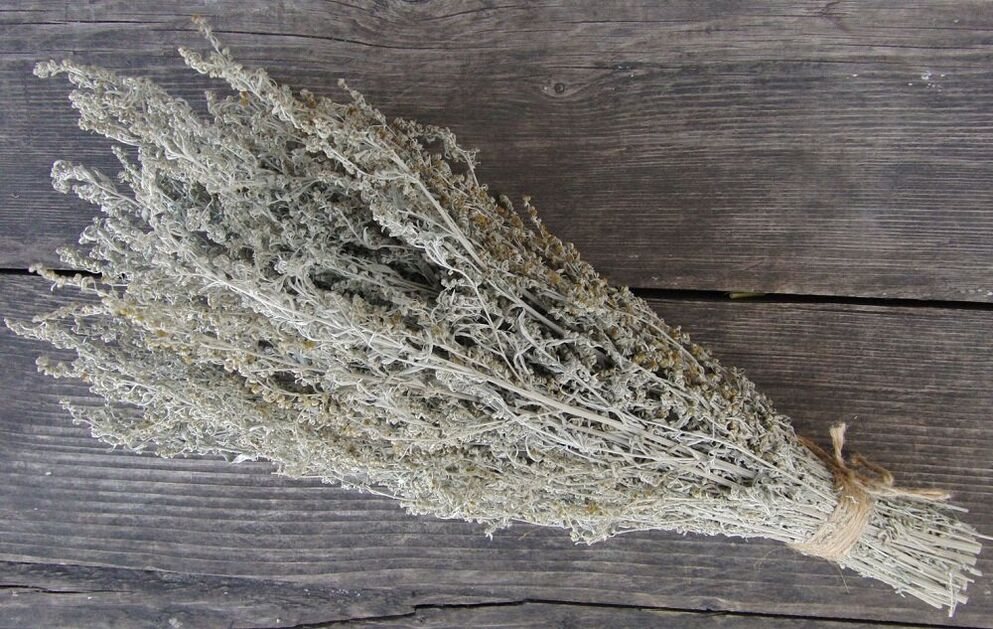
Dried wormwood should be taken once a day with a glass of water. Washing and microenemas are performed every night. The course of therapy lasts one week.
A decoction for douching and enemas is simple to prepare. 1 tspDried herbs pour 1 liter. boiling waterWait until the broth cools to 30 degrees and strain. For one procedure, 50 ml of infusion is enough. Injections into the urethra and anus are done with a syringe.
Do not forget that for each procedure you need to take a separate syringe so as not to accidentally get an infection. The broth should be injected sharply into the urethra: this way the liquid will move away.
Medicinal juices
To effectively treat chronic prostatitis, you can drink juices. It is better to drink freshly squeezed vegetable juices; drinksasparagus and cucumber, beet, carrot. You need to drink 600 ml a day. The course of treatment is 10 days.
There are contraindications, it is necessary to consult a specialist.
Disease prevention
Prostatitis is quite difficult to treat and tends to come back. That is why men aged 30 and older should pay attention to disease prevention.
The main preventive measures include:
- have a regular sex life with a partner;
- practice sports and special gymnastics;
- take multivitamins to strengthen the immune system;
- sleep-wake adherence;
- reduction of stressful situations;
- rejection of bad habits;
- regular visits to the proctologist;
- Timely treatment of colds and viral diseases.
Prevention must cover all areas of man's activity, from nutrition to sexual relations. It is important to understand that prostatitis is curable and that you can continue to live a full and active life.























